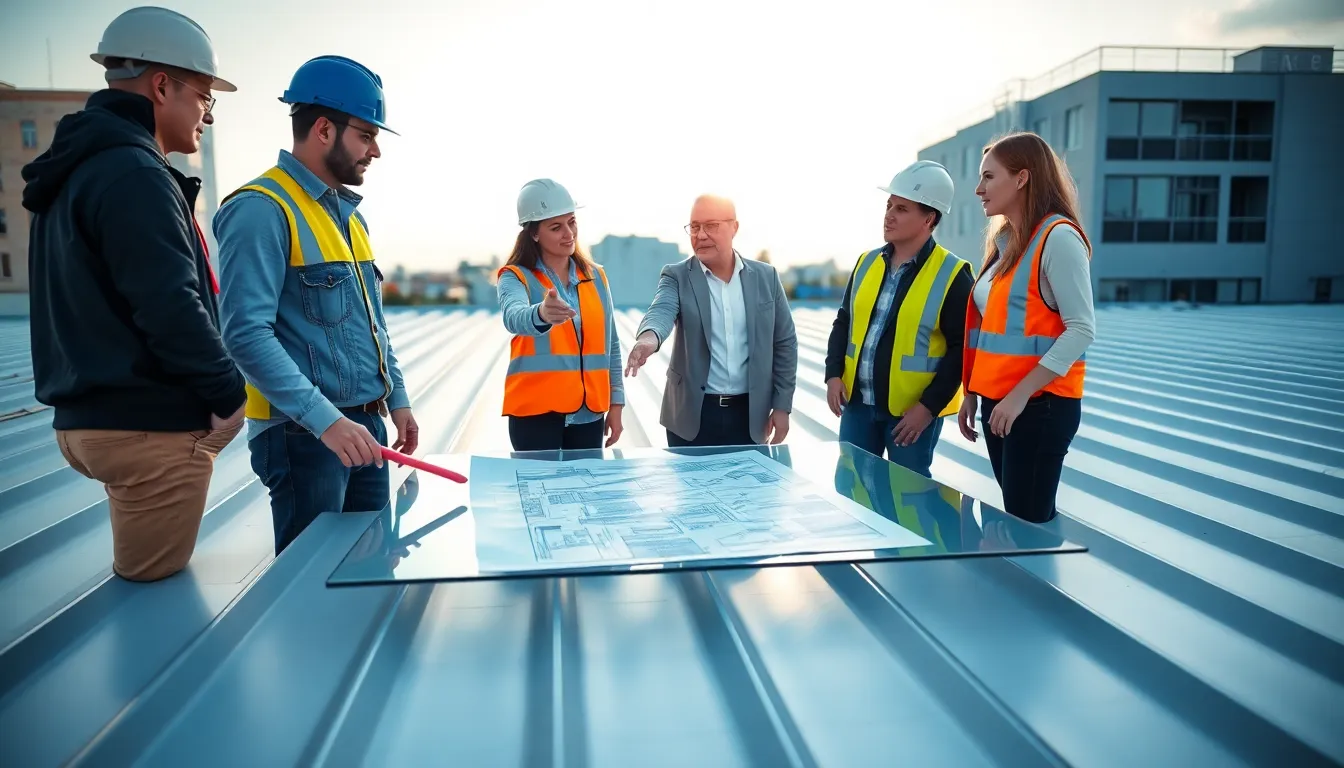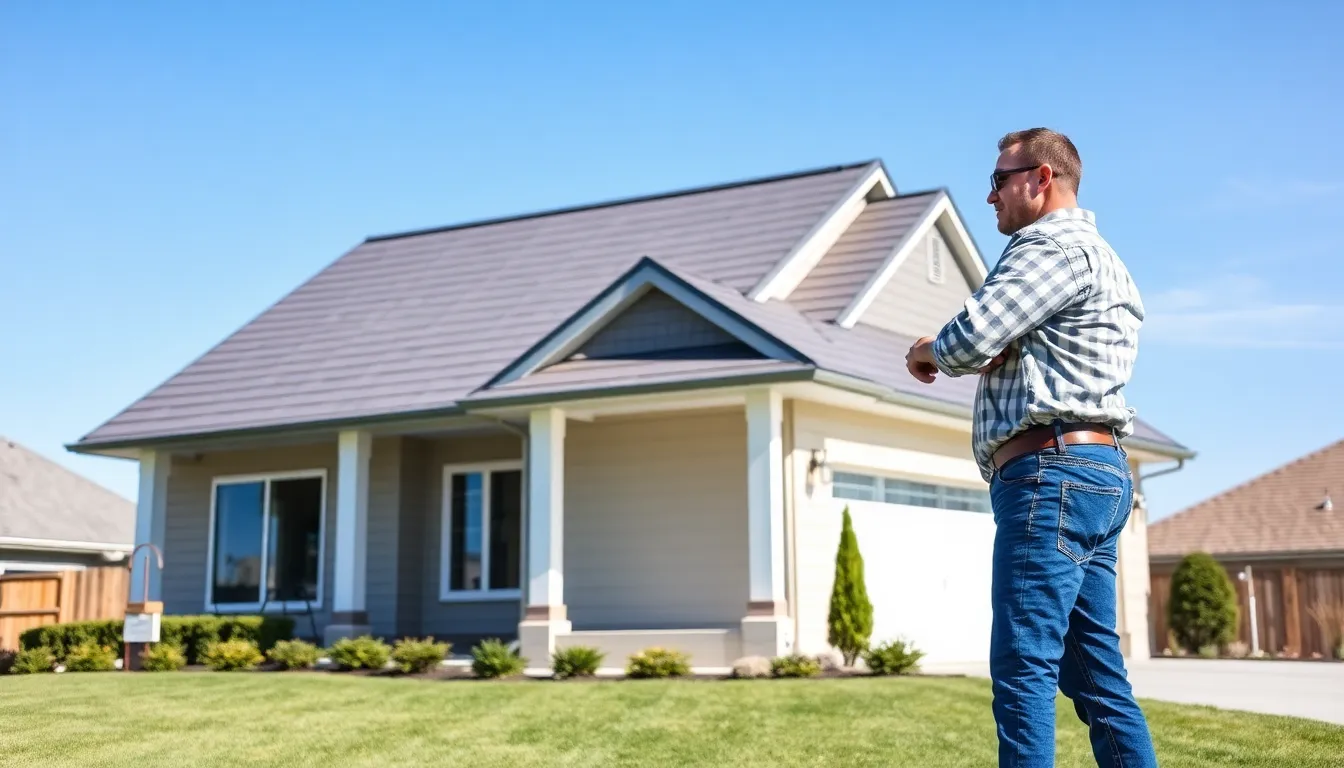So, you’re considering vinyl roofing for your next project? Great choice. Not only does it look good, but it also packs a punch when it comes to durability and functionality. Imagine a roof that not only shelters you from the elements but also adds style and value to your home. Sounds too good to be true? Well, you’re in for a treat. This comprehensive guide will take a deep jump into everything vinyl roofing, from its definition to installation tips, ensuring you’re equipped with all the info you need to make a well-well-informed choice.
Table of Contents
ToggleWhat Is Vinyl Roofing?

Vinyl roofing, often regarded as the unsung hero of roofing materials, is made from polyvinyl chloride (PVC). This notable synthetic material is not just resilient but also versatile, making it a popular choice for various building types. It’s often used in low-slope and flat roof applications, offering an aesthetic appeal that’s hard to resist. Plus, the seamless installation means fewer leaks and lower maintenance costs in the long run.
Benefits of Vinyl Roofing
The benefits of vinyl roofing are numerous, and they might just convince anyone on the fence about their roofing material choice. Durability stands at the forefront. Vinyl roofs can withstand extreme weather conditions, including heavy wind, rain, and even hail, making them ideal for regions prone to such elements.
Energy efficiency is another significant benefit. With reflective surfaces, vinyl roofing helps keep your home cooler in the summer, reducing energy costs.
Also, vinyl roofing is resistant to some chemicals and pollutants, meaning it won’t break down like some other materials might. And let’s not forget the cost-effectiveness of vinyl roofing: it often comes at a lower price point compared to materials like metal or slate, plus its longevity means fewer replacements down the road.
Common Applications for Vinyl Roofing
Vinyl roofing isn’t limited to residential spaces: it finds its way into several applications, showcasing tremendous versatility. For commercial buildings, particularly those with flat or low-slope roofs, vinyl provides a robust solution that stands the test of time. It’s also popular in industrial buildings due to its durability and lower maintenance needs. In the residential sector, homeowners often opt for vinyl roofs when constructing garages, sheds, and other ancillary structures, which need reliable protection without very costly.
Installation Process for Vinyl Roofing
Installing vinyl roofing isn’t as daunting as it may sound. To get started, it’s vital to prepare the roof deck, ensuring that it is clean, dry, and free from any structural issues. Next, the installer lays down an underlayment to create a smooth surface for the vinyl layers.
Once everything is primed and ready, sheets of vinyl are positioned and meticulously secured to the roof using various fastening methods, including mechanical fastening or adhesive. The seams are then welded together using heat to create a seamless finish, providing additional assurance against potential leaks. While DIY enthusiasts can attempt it, hiring a professional is still advisable for those less experienced.
Maintenance Tips for Vinyl Roofing
Maintaining a vinyl roof is comparatively straightforward. Regular inspection is key: homeowners should check for any signs of wear or damage, particularly after severe weather events. When it comes to cleaning, a soft-bristle broom and a mixture of water with mild detergent can do wonders. Avoid harsh chemicals that could potentially degrade the roofing material.
It’s also beneficial to remove debris such as leaves or branches to prevent moisture retention, which can lead to mold or algae growth. Scheduling professional inspections every few years is a smart move to prolong the lifespan of the roof overly.
Comparing Vinyl Roofing to Other Materials
While there are many roofing materials available, vinyl roofing shines brightly when compared to others. For example, when pitted against asphalt shingles, vinyl’s longevity and durability often win out. Asphalt typically lasts around 20 years, while a well-maintained vinyl roof can exceed 30 years.
Also, metal roofing, though incredibly durable, often comes at a higher price point, both in terms of material and installation costs. Vinyl roofing offers comparable durability, with an easier and more cost-effective installation.





